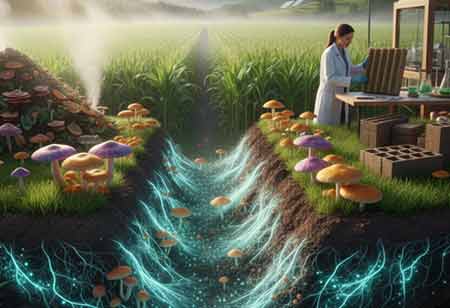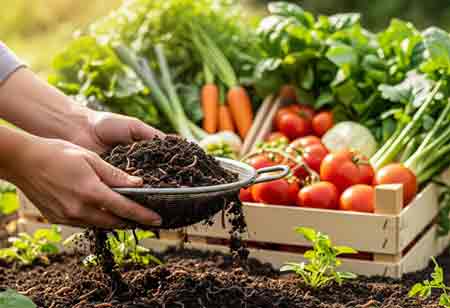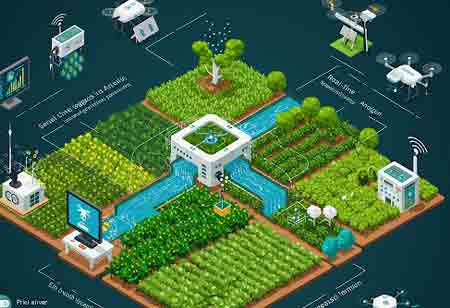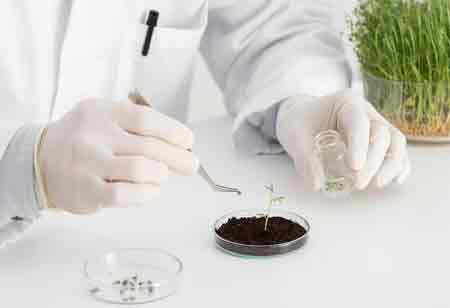Thank you for Subscribing to Agri Business Review Weekly Brief
Agri-Tech Breakthroughs: Plasma Farming Solutions for Scalable Impact
Overall, organic plasma farming solutions offer a holistic, eco-friendly approach to modern agriculture, fostering productivity, resilience, and sustainability across the food system.
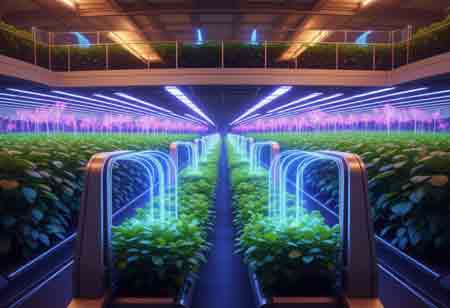
By
Agri Business Review | Tuesday, July 15, 2025
Stay ahead of the industry with exclusive feature stories on the top companies, expert insights and the latest news delivered straight to your inbox. Subscribe today.
The global agribusiness sector is experiencing a transformative shift towards more sustainable and efficient practices, driven by increasing population demands, environmental concerns, and the desire for higher-quality produce. Within this evolving landscape, organic plasma farming solutions are emerging as a groundbreaking and eco-friendly technology poised to meet the increasing demands of a growing population. This innovative approach harnesses the unique properties of plasma, often referred to as the fourth state of matter, to enhance various stages of crop production without relying on synthetic chemicals or excessive resource consumption.
Understanding Plasma in Agriculture
Plasma, in the context of agriculture, is a unique form of ionized gas. It's a mixture of neutral atoms, molecules, ions, electrons, and reactive species. When energy is added to a gas, its molecules break apart into atoms, and further energy causes these atoms to become ions, forming plasma. In organic plasma farming, we primarily use what's known as 'cold plasma' or 'non-thermal plasma' (NTP). This type of plasma operates at or near room temperature, which is essential because it allows us to treat delicate biological materials like seeds, plants, and water without causing any heat damage.
The effectiveness of plasma in agriculture comes from the diverse range of reactive oxygen and nitrogen species (RONS), charged particles, and UV radiation it produces. These active components interact with biological surfaces and surrounding media, leading to a cascade of beneficial effects. For instance, they can enhance seed germination, improve plant growth, and even help in the removal of harmful pathogens from water. The ability to generate plasma on-site using only air, water, and electricity makes it an inherently sustainable technology, reducing the need for transportation and dependence on external inputs.
Applications Across the Agri-Food Chain
Organic plasma farming solutions are emerging as a transformative innovation across the entire agri-food value chain, offering sustainable and non-chemical alternatives from pre-harvest cultivation to post-harvest preservation. One of the most impactful applications of plasma technology lies in seed treatment. Exposure to cold plasma modifies the seed coat’s surface, enhancing wettability and accelerating water absorption. These physical changes, coupled with the stimulation of internal metabolic activity, result in significantly improved germination rates and more vigorous seedling development. Plasma-treated seeds often demonstrate longer, stronger seedlings with greater biomass, providing a uniform and robust foundation for crop growth.
Plasma technology also contributes to plant development during the growth phase. Plasma-activated water (PAW), produced by subjecting water and air to plasma, is rich in reactive oxygen and nitrogen species (RONS), especially nitrates and nitrites, which function as natural fertilizers. When used for irrigation, PAW enhances nutrient uptake and assimilation, often resulting in increased leaf area, dry weight, and overall plant vitality. In some cases, nitrogen content can double. This method not only boosts plant growth but also eliminates the need for synthetic fertilizers produced via energy-intensive processes like Haber-Bosch, aligning well with the goals of sustainable agriculture. Additionally, plasma treatments can activate plants’ internal defense mechanisms, improving their resilience to environmental stressors such as drought and salinity, thereby contributing to more consistent yields under adverse conditions.
In terms of soil and water management, plasma-treated water enhances water quality and improves soil physicochemical properties, increasing nutrient availability and uptake efficiency. This results in reduced reliance on external fertilizers and minimizes nutrient runoff, supporting a closed-loop nutrient cycle and reducing environmental impact on surrounding ecosystems.
Plasma technology also shows promise in biological control and crop protection. The reactive species generated by plasma exhibit strong antimicrobial effects, enabling the decontamination of seeds and plant surfaces while reducing the presence of harmful fungi and bacteria. Plasma can also disrupt the life cycles of various pests and pathogens, providing a non-toxic, residue-free alternative to conventional pesticides. This approach not only meets growing consumer demands for cleaner produce but also supports biodiversity and ecosystem health.
In the post-harvest phase, cold plasma treatment can significantly extend the shelf life of produce by suppressing microbial spoilage without the need for high temperatures or chemical preservatives. This helps maintain the nutritional and sensory qualities of food, reduces post-harvest losses, and supports more sustainable and efficient supply chain operations.
The Future of Organic Plasma Farming
The trajectory of organic plasma farming solutions points towards a future where agriculture is more resilient, resource-efficient, and environmentally benign. The ongoing research and development in this field are focused on optimizing plasma delivery mechanisms, refining treatment parameters for diverse crop types, and integrating these systems seamlessly into existing farm infrastructure.
The core tenets of organic plasma farming — on-site production of beneficial agents, reduced reliance on synthetic inputs, and enhanced natural processes within the plant and its environment — position it as a key enabler of circular agriculture and low-carbon food production. As the industry continues to prioritize sustainability and food security, organic plasma farming solutions are poised to play a pivotal role in shaping the next generation of agribusiness, fostering healthier ecosystems and providing nutritious food for a growing global population.

